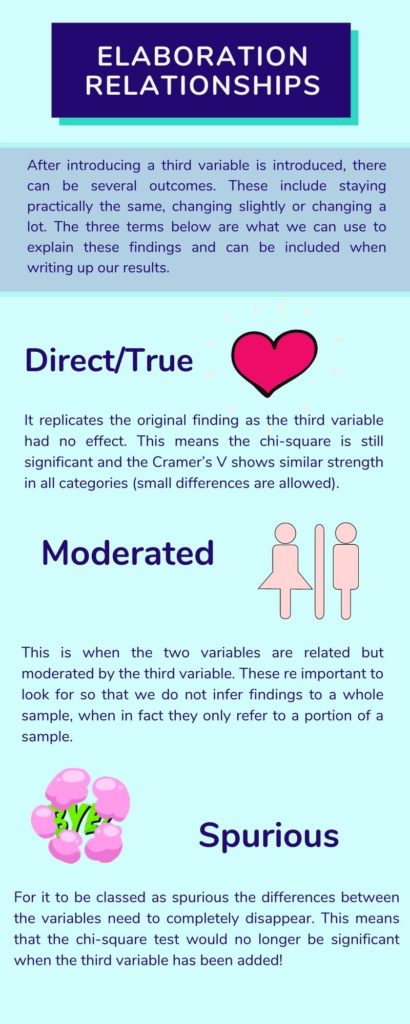Reporting results
When reporting results, we can summarise the results in a quick table and written description! Have a go at filling in the table and creating a descriptive paragraph. The pointers below will help!
| Rural -> bcsvictim | Chi-Square | Cramer’s V |
| Male | ||
| Female | ||
| Total |
Descriptive paragraph
- What did you test?
- Did significance change from the original chi-square (total)?
- Did Cramer’s V value change from original (total)?
- Noticeable findings from crosstab
Types of Relationship in Elaborations
After introducing a third variable, there can be several outcomes. These include staying practically the same, changing slightly or changing a lot. The three terms below are what we can use to explain these findings and can be included when writing up our results.
Direct or True Relationship: it replicates the original finding as the third variable had no effect. This means the chi-square is still significant and the Cramer’s V shows similar strength in all categories (small differences are allowed).
Moderated Relationship: this is when the two variables are related but moderated by the third variable. These are important to look for so that we do not infer findings to a whole sample, when in fact they only refer to a portion of a sample.
Spurious Relationship: for it to be classed as spurious the differences between the variables need to completely disappear. This means that the chi-square test would no longer be significant when the third variable has been added!

Apply Your Thinking:
Looking at these definitions, which relationships do you think the results in the previous sprint represent?
Refer back to the previous sprint!
Don’t worry if you can’t remember them, this handy infographic below can be downloaded and saved so you can refer to them at any time!

WELL DONE YOU CAN NOW INTERPRET AND REPORT ELABORATION RESULTS!






